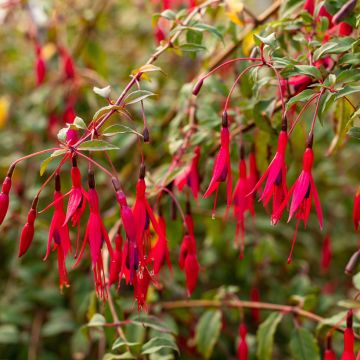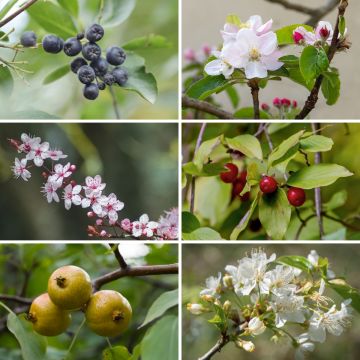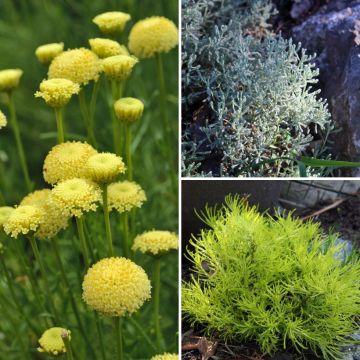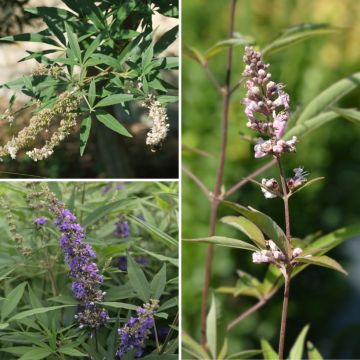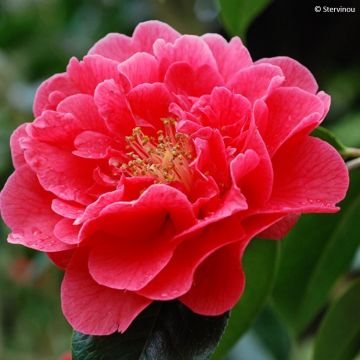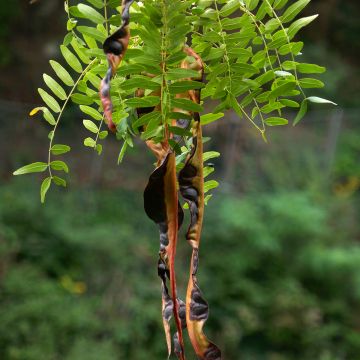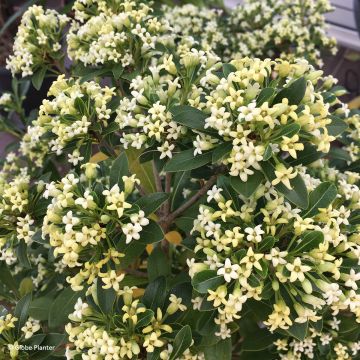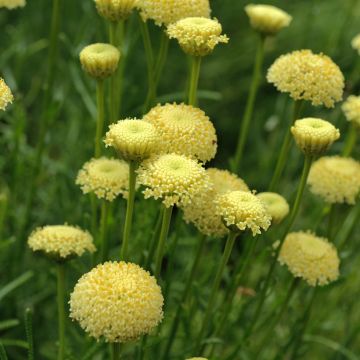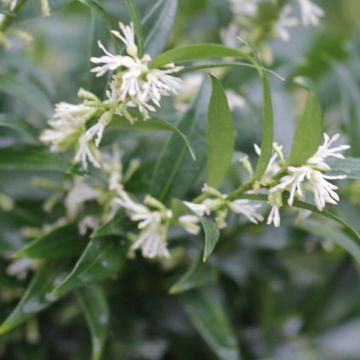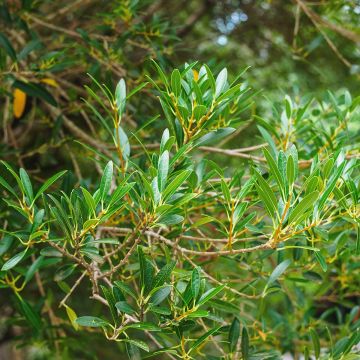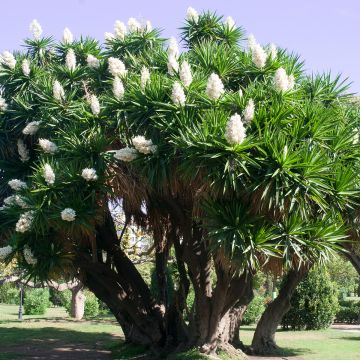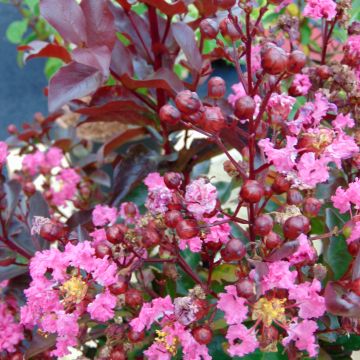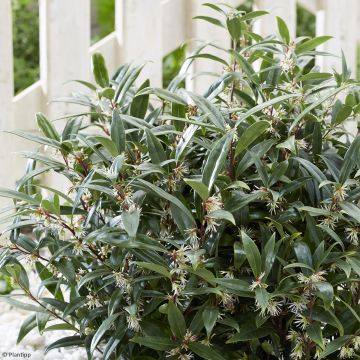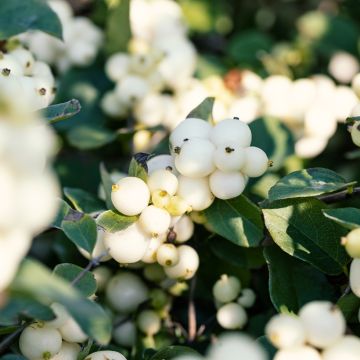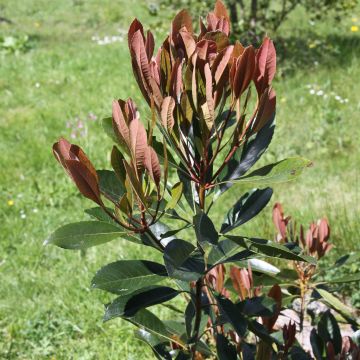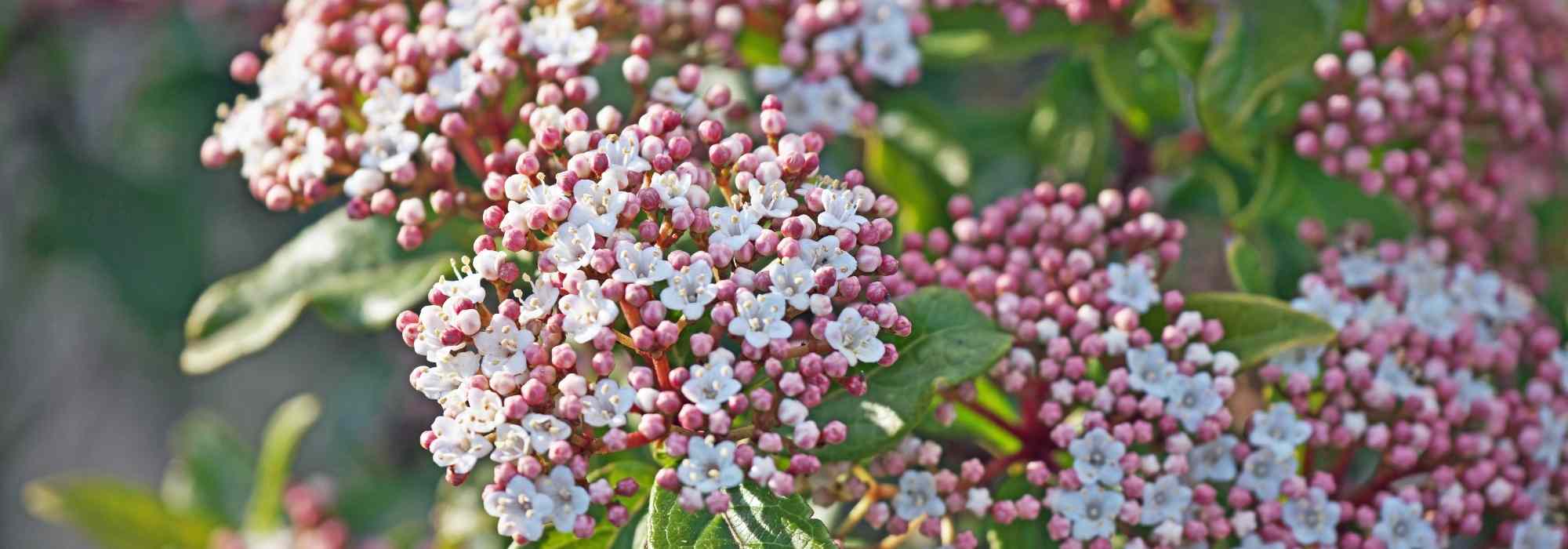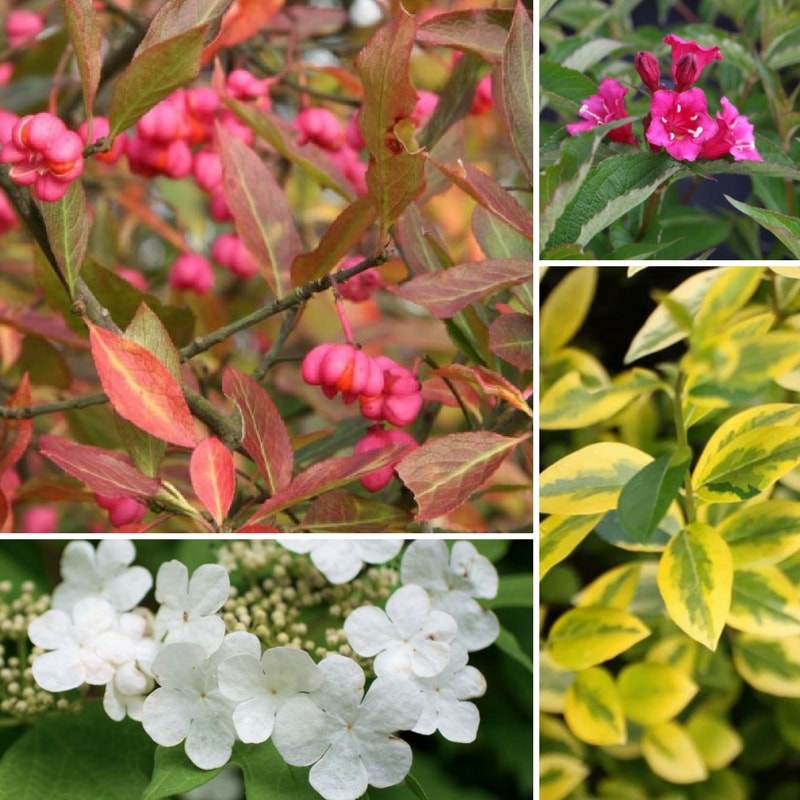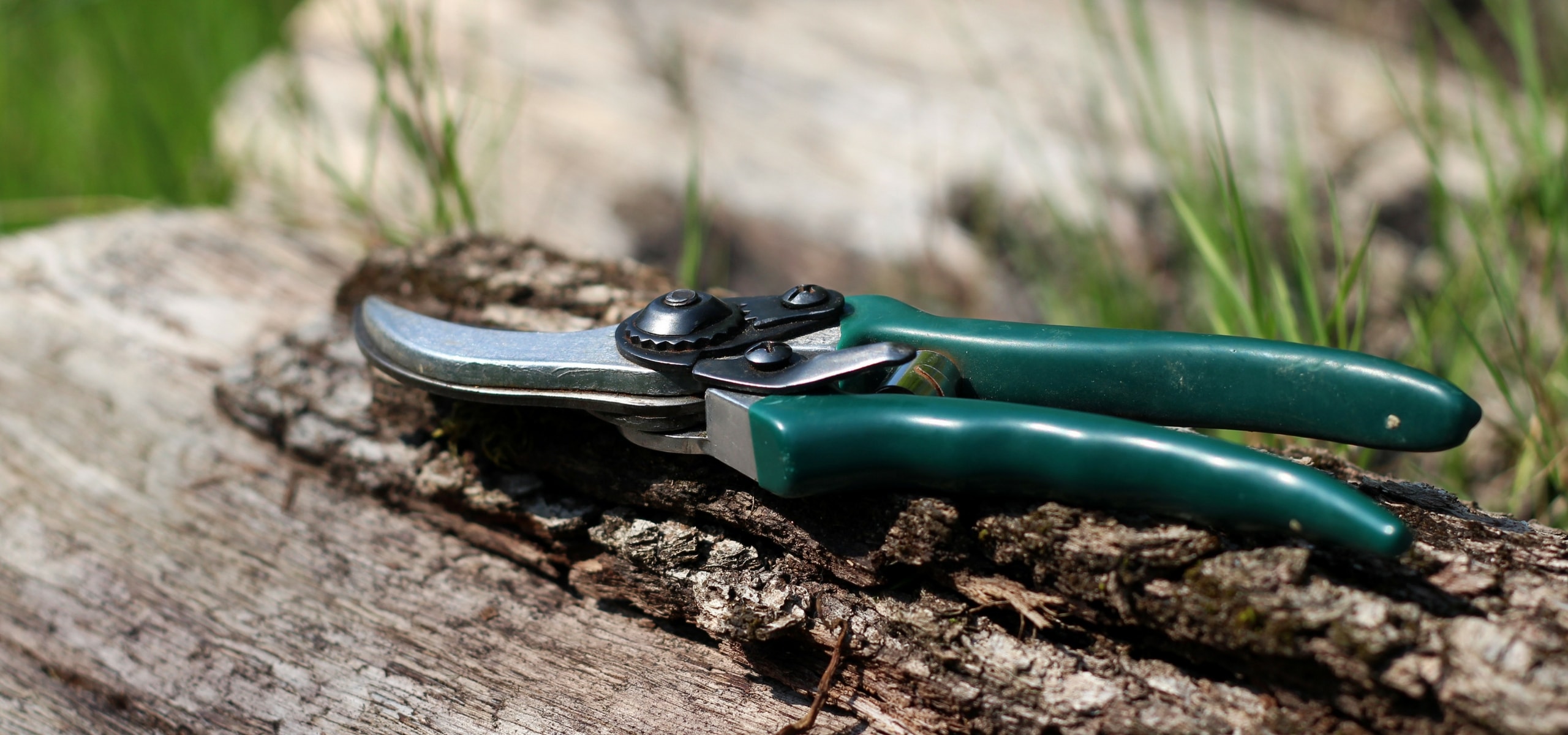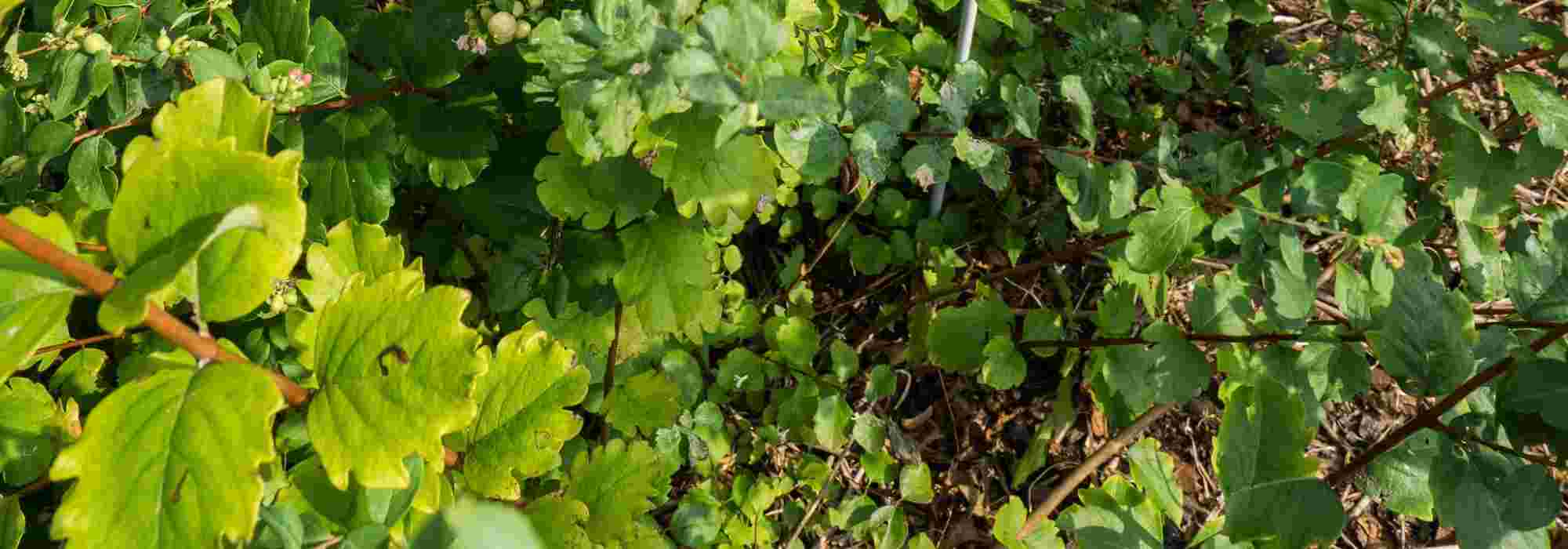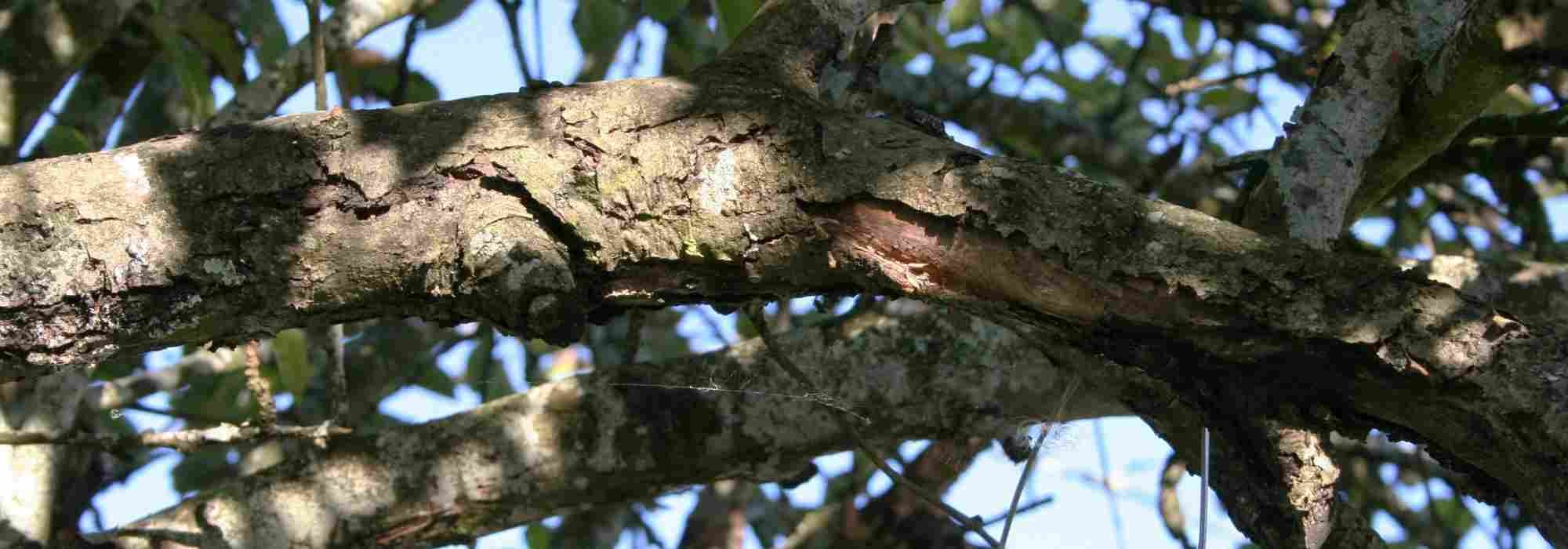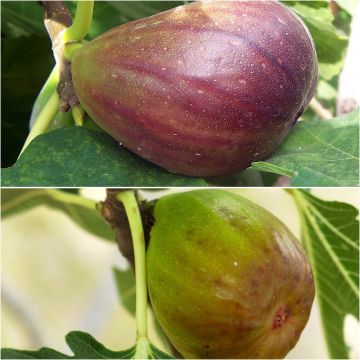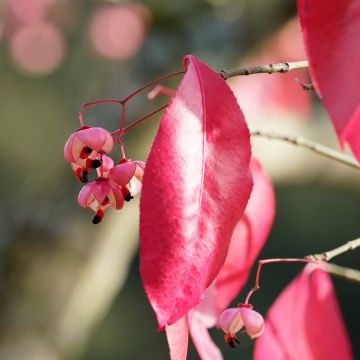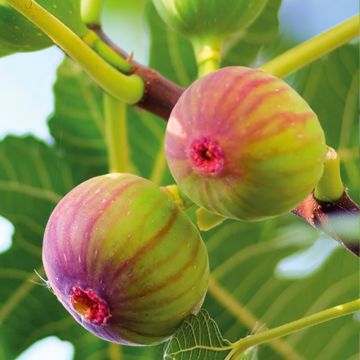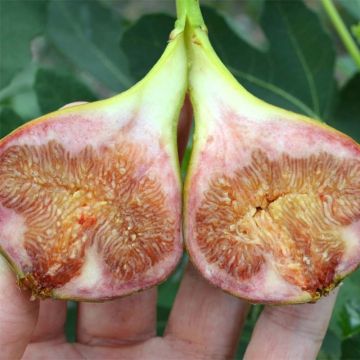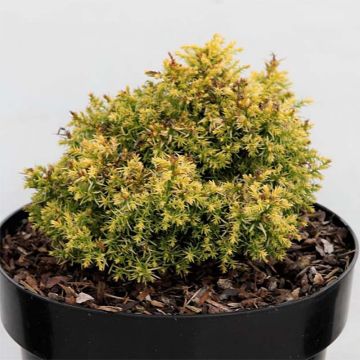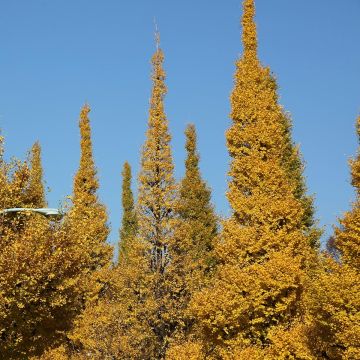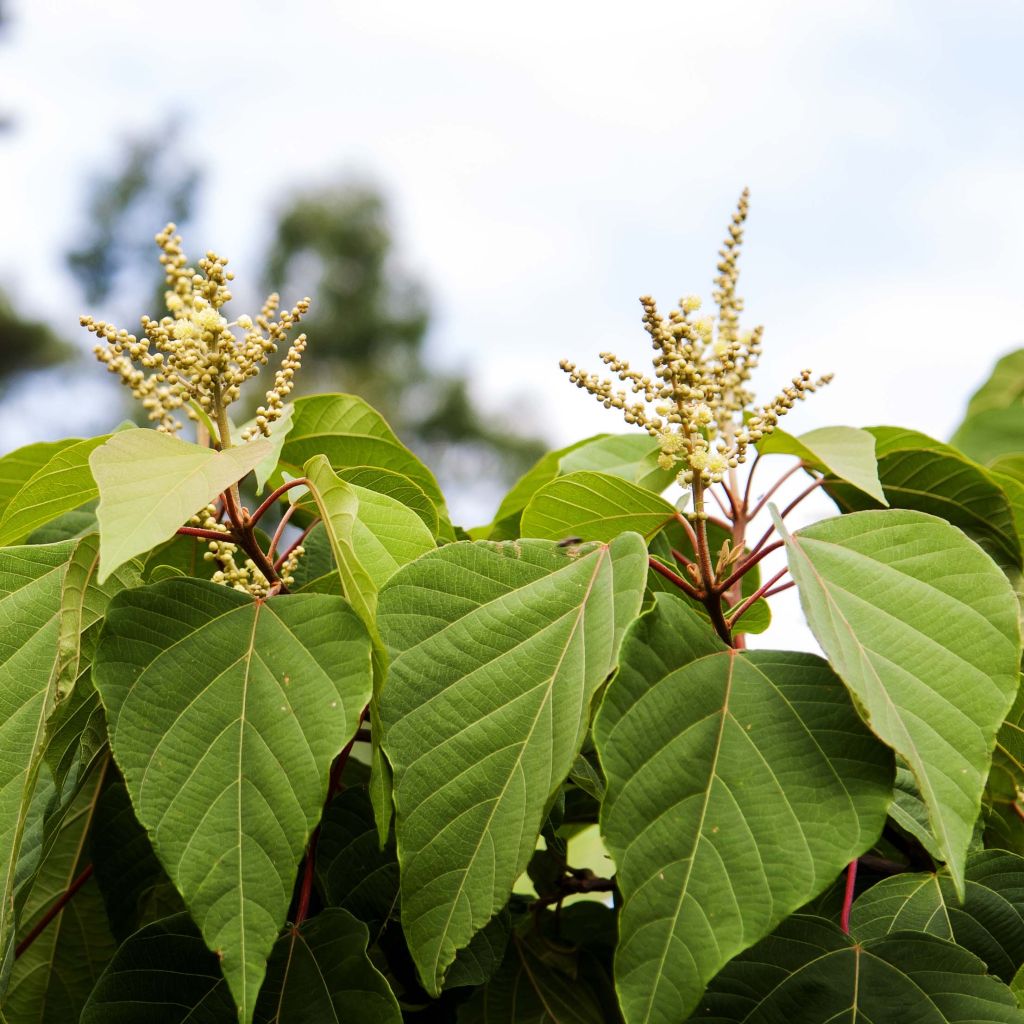

Mallotus japonicus
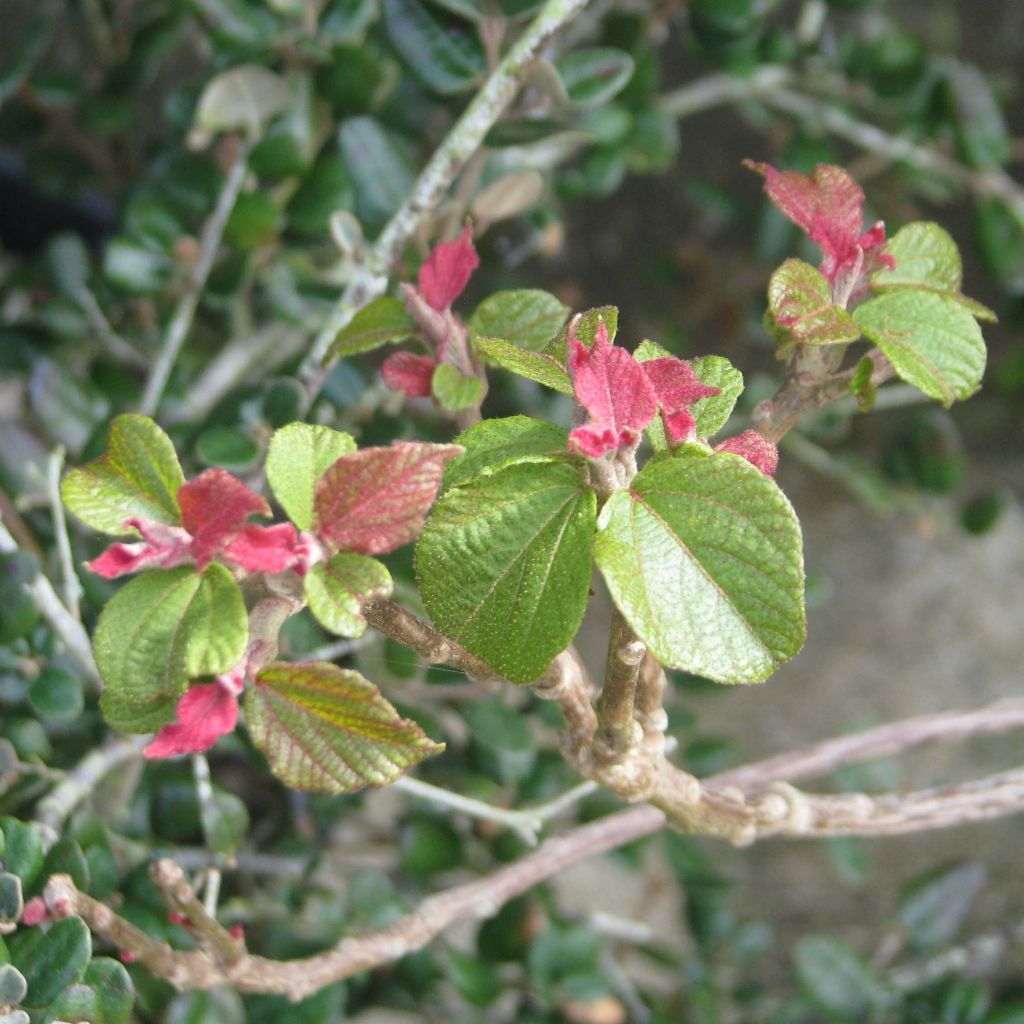

Mallotus japonicus
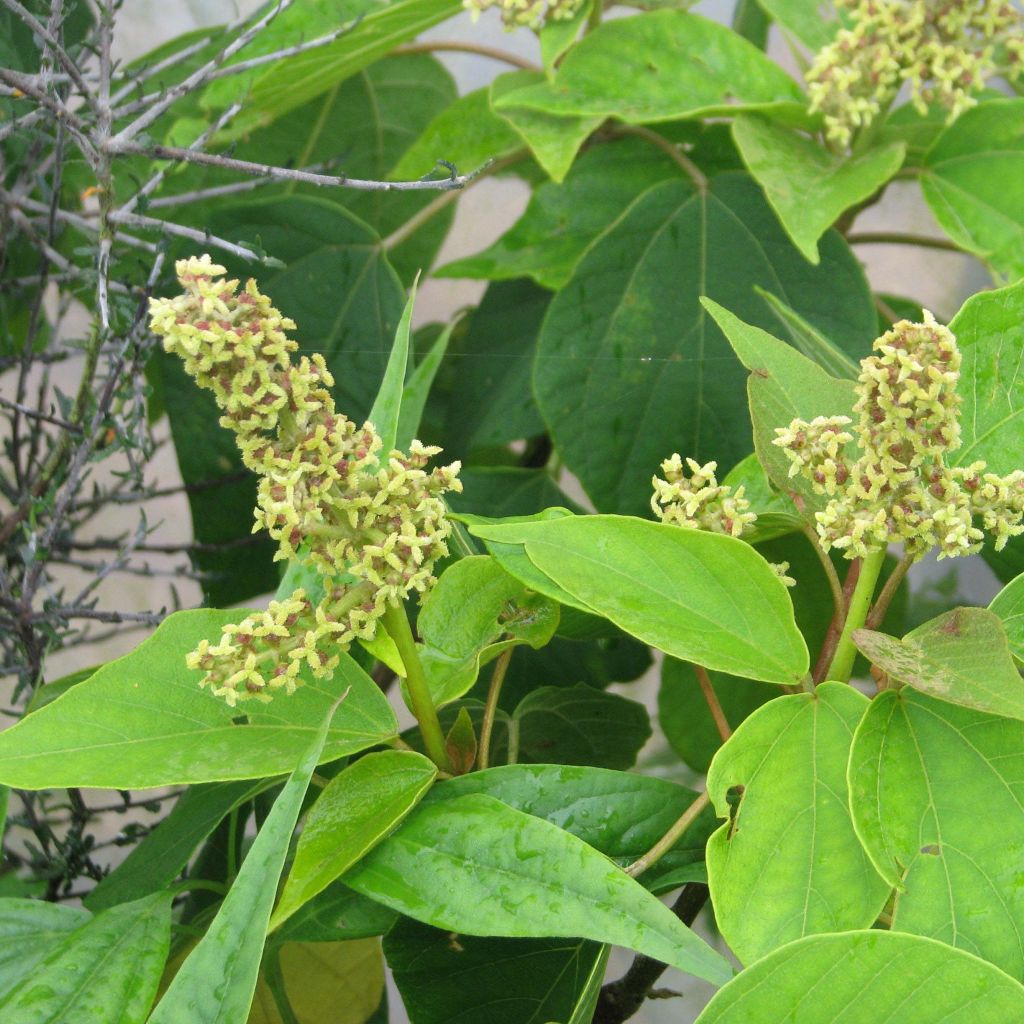

Mallotus japonicus
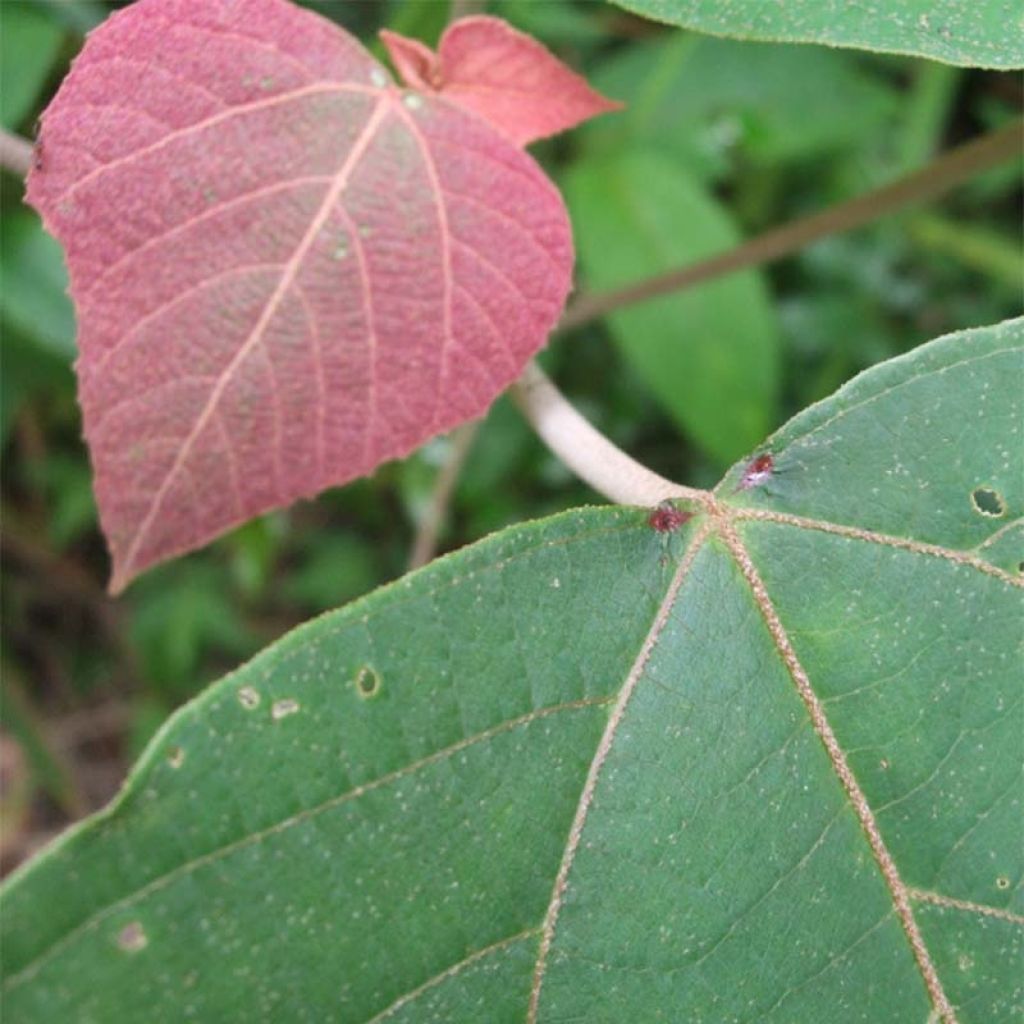

Mallotus japonicus
Mallotus japonicus
Mallotus japonicus
Japanese Tallow Tree, Varnish tree, Kamila tree
Special offer!
Receive a €20 voucher for any order over €90 (excluding delivery costs, credit notes, and plastic-free options)!
1- Add your favorite plants to your cart.
2- Once you have reached €90, confirm your order (you can even choose the delivery date!).
3- As soon as your order is shipped, you will receive an email containing your voucher code, valid for 3 months (90 days).
Your voucher is unique and can only be used once, for any order with a minimum value of €20, excluding delivery costs.
Can be combined with other current offers, non-divisible and non-refundable.
Why not try an alternative variety in stock?
View all →This plant carries a 24 months recovery warranty
More information
We guarantee the quality of our plants for a full growing cycle, and will replace at our expense any plant that fails to recover under normal climatic and planting conditions.
Does this plant fit my garden?
Set up your Plantfit profile →
Description
Mallotus japonicus, little known and rarely planted, is a large deciduous Asian bush that is original, highly ornamental, and very accommodating. This surprising relative of euphorbias, while not the hardiest, is interesting for its regular candelabra-like architecture, its wide-spreading habit, its young pink leaves, its luxuriant foliage, its fragrant flowering, and its rapid growth. It is easy to grow in any sufficiently deep soil, even limestone, in sun or not too dense shade. Plant it in isolation to enjoy its elegance and unusual winter silhouette. An extraordinary plant that should thrive in many regions spared by severe frosts!
Native to Japan, Korea, Taiwan, and central China, Mallotus japonicus (synonyms Rottlera japonica, Croton japonicus) is a large deciduous bush or small tree belonging to the large Euphorbiaceae family. In nature, it is found in open woodlands, forest edges, and wooded valleys. Once well established, it can withstand brief frosts of around -10 to -12°C (14 to 10.4°F). However, it can vigorously regrow from the stump after having experienced slightly more severe frosts if its stump is protected. It can do without watering in summer in all our regions.
With rapid growth, this large bush is capable of reaching more than 6m (20ft) in height and up to 10 to 12m (33 to 39ft) in width at the crown level if not shaped by the gardener. It spontaneously develops several trunks, on which spread out branches appear, with ternary divisions (in groups of 3 branches) that are very staggered. The young wood, leaf petioles, and floral peduncles are covered with a velvety down. The leaves emerge in spring (early April), displaying a bright red-pink colour, before fading to salmon pink, and turning a fresh apple green colour with a slightly wavy appearance. Carried by red petioles, they can measure 10 to 20cm (4 to 8in) long and 6 to 15cm (2 to 6in) wide. They turn golden yellow before falling in autumn.
Flowering occurs from July to August. This species, described as dioecious, bears male or female flowers on separate individuals. In female plants, the flowers are gathered in small upright panicles or clusters exuding a very pleasant fragrance. Lacking petals, they display 3 pale-yellow stigmas that gradually turn bright red. In male plants, odoriferous flowers also appear assembled in small erect panicles, but this time consisting of a bouquet of pale-yellow stamens. In the presence of a male plant, the female flowers produce small green and velvety fruits, each containing a small black seed.
This bush deserves to be planted more in our gardens, taking into account its long-term development. It should preferably be placed in isolation in front of a large shrub border or in a well-cleared space that allows its silhouette to be admired even in winter. Its adaptability and low requirements make it a good choice for our not-too-cold regions.
Report an error about the product description
Mallotus japonicus in pictures
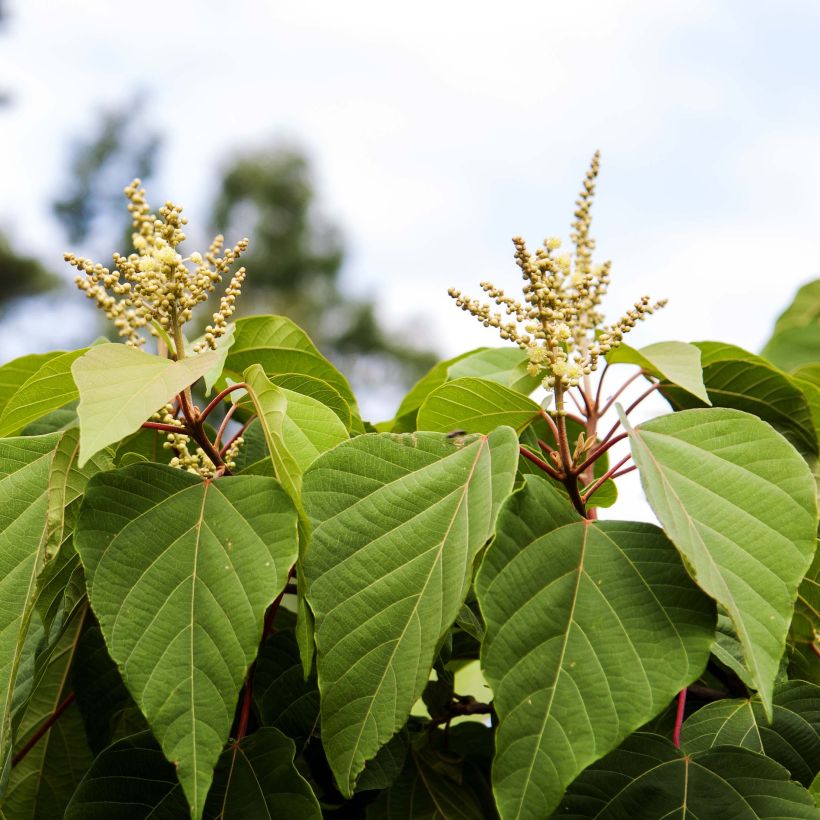

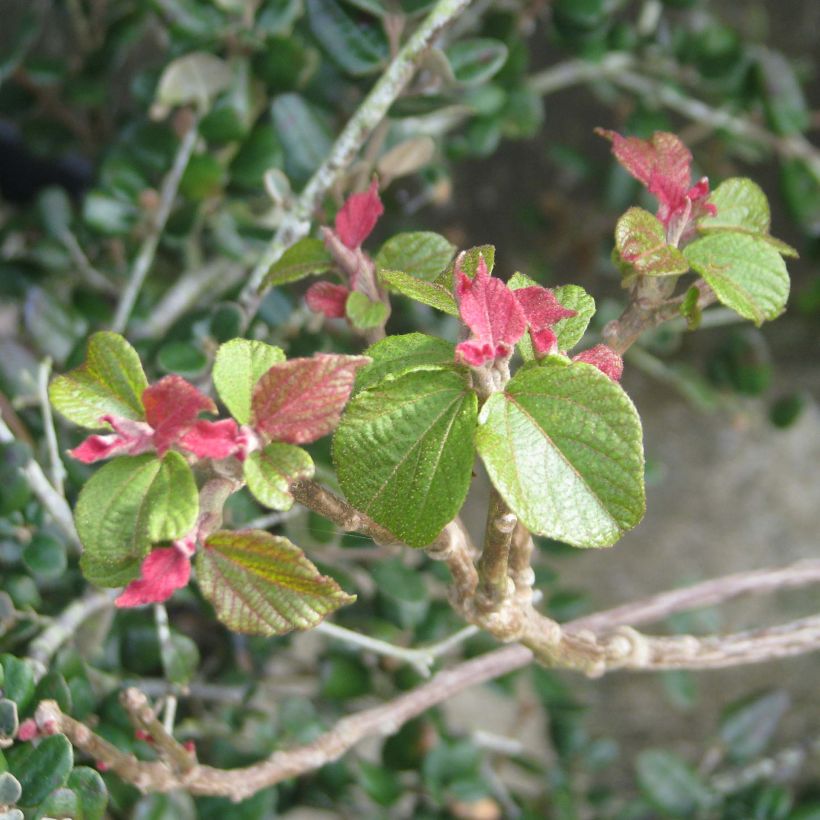

Plant habit
Flowering
Foliage
Botanical data
Mallotus
japonicus
Euphorbiaceae
Japanese Tallow Tree, Varnish tree, Kamila tree
China
Other Shrubs A to Z
View all →Planting and care
Grow in regions spared by severe frosts. Its stump is capable of withstanding brief frosts of around -12°C (10.4°F), in a sheltered position. It is capable of regrowing from the stump if its branches have frozen. This bush is preferably planted in spring in cool regions, and at the beginning of autumn in drier and warmer climates. Choose a location sheltered from cold and dry winds. A sunny or partially shaded exposure is suitable. In very cool climates, choose sunnier exposures. It will adapt to any sufficiently deep and well-drained garden soil, tolerating the presence of limestone. Mallotus japonica proves to be water-efficient once well established. In cold regions, protect young plants with winter fleece and mulch the base.
It is a sturdy plant that is easy to grow and requires little maintenance. Pruning, if necessary, should be done in autumn.
Planting period
Intended location
Care
Planting & care advice
-
, onOrder confirmed
Reply from on Promesse de fleurs
Similar products
Haven't found what you were looking for?
Hardiness is the lowest winter temperature a plant can endure without suffering serious damage or even dying. However, hardiness is affected by location (a sheltered area, such as a patio), protection (winter cover) and soil type (hardiness is improved by well-drained soil).

Photo Sharing Terms & Conditions
In order to encourage gardeners to interact and share their experiences, Promesse de fleurs offers various media enabling content to be uploaded onto its Site - in particular via the ‘Photo sharing’ module.
The User agrees to refrain from:
- Posting any content that is illegal, prejudicial, insulting, racist, inciteful to hatred, revisionist, contrary to public decency, that infringes on privacy or on the privacy rights of third parties, in particular the publicity rights of persons and goods, intellectual property rights, or the right to privacy.
- Submitting content on behalf of a third party;
- Impersonate the identity of a third party and/or publish any personal information about a third party;
In general, the User undertakes to refrain from any unethical behaviour.
All Content (in particular text, comments, files, images, photos, videos, creative works, etc.), which may be subject to property or intellectual property rights, image or other private rights, shall remain the property of the User, subject to the limited rights granted by the terms of the licence granted by Promesse de fleurs as stated below. Users are at liberty to publish or not to publish such Content on the Site, notably via the ‘Photo Sharing’ facility, and accept that this Content shall be made public and freely accessible, notably on the Internet.
Users further acknowledge, undertake to have ,and guarantee that they hold all necessary rights and permissions to publish such material on the Site, in particular with regard to the legislation in force pertaining to any privacy, property, intellectual property, image, or contractual rights, or rights of any other nature. By publishing such Content on the Site, Users acknowledge accepting full liability as publishers of the Content within the meaning of the law, and grant Promesse de fleurs, free of charge, an inclusive, worldwide licence for the said Content for the entire duration of its publication, including all reproduction, representation, up/downloading, displaying, performing, transmission, and storage rights.
Users also grant permission for their name to be linked to the Content and accept that this link may not always be made available.
By engaging in posting material, Users consent to their Content becoming automatically accessible on the Internet, in particular on other sites and/or blogs and/or web pages of the Promesse de fleurs site, including in particular social pages and the Promesse de fleurs catalogue.
Users may secure the removal of entrusted content free of charge by issuing a simple request via our contact form.
The flowering period indicated on our website applies to countries and regions located in USDA zone 8 (France, the United Kingdom, Ireland, the Netherlands, etc.)
It will vary according to where you live:
- In zones 9 to 10 (Italy, Spain, Greece, etc.), flowering will occur about 2 to 4 weeks earlier.
- In zones 6 to 7 (Germany, Poland, Slovenia, and lower mountainous regions), flowering will be delayed by 2 to 3 weeks.
- In zone 5 (Central Europe, Scandinavia), blooming will be delayed by 3 to 5 weeks.
In temperate climates, pruning of spring-flowering shrubs (forsythia, spireas, etc.) should be done just after flowering.
Pruning of summer-flowering shrubs (Indian Lilac, Perovskia, etc.) can be done in winter or spring.
In cold regions as well as with frost-sensitive plants, avoid pruning too early when severe frosts may still occur.
The planting period indicated on our website applies to countries and regions located in USDA zone 8 (France, United Kingdom, Ireland, Netherlands).
It will vary according to where you live:
- In Mediterranean zones (Marseille, Madrid, Milan, etc.), autumn and winter are the best planting periods.
- In continental zones (Strasbourg, Munich, Vienna, etc.), delay planting by 2 to 3 weeks in spring and bring it forward by 2 to 4 weeks in autumn.
- In mountainous regions (the Alps, Pyrenees, Carpathians, etc.), it is best to plant in late spring (May-June) or late summer (August-September).
The harvesting period indicated on our website applies to countries and regions in USDA zone 8 (France, England, Ireland, the Netherlands).
In colder areas (Scandinavia, Poland, Austria...) fruit and vegetable harvests are likely to be delayed by 3-4 weeks.
In warmer areas (Italy, Spain, Greece, etc.), harvesting will probably take place earlier, depending on weather conditions.
The sowing periods indicated on our website apply to countries and regions within USDA Zone 8 (France, UK, Ireland, Netherlands).
In colder areas (Scandinavia, Poland, Austria...), delay any outdoor sowing by 3-4 weeks, or sow under glass.
In warmer climes (Italy, Spain, Greece, etc.), bring outdoor sowing forward by a few weeks.






























